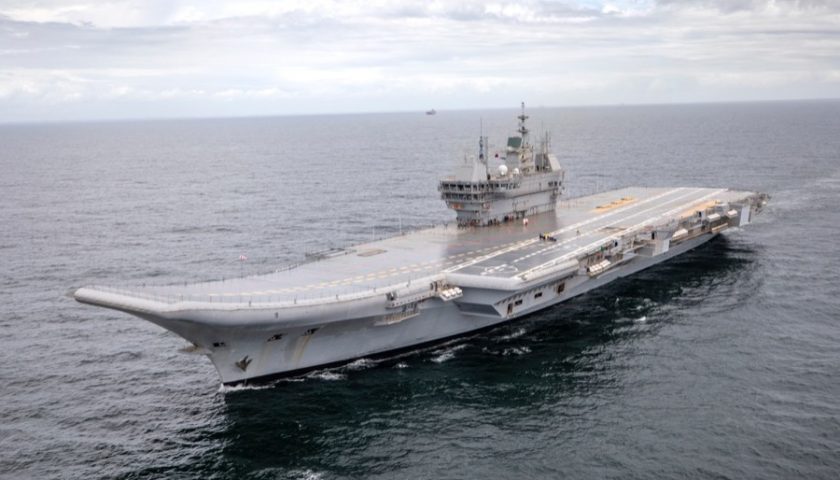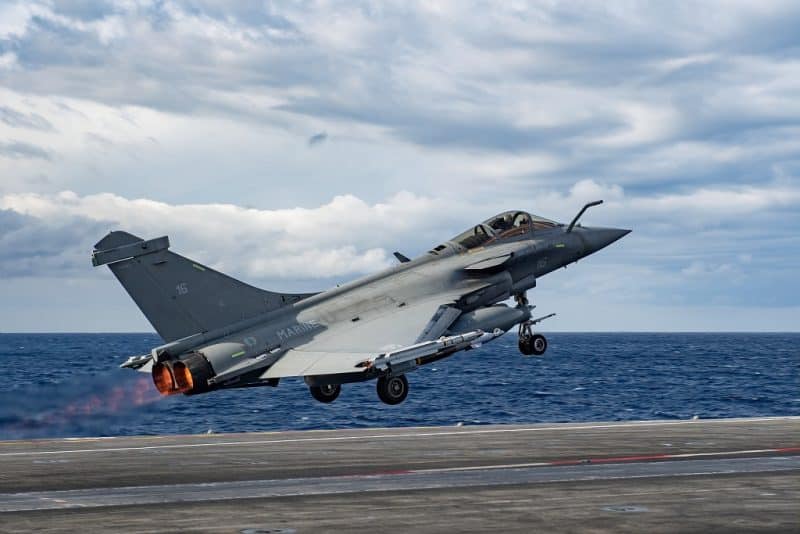Le Rafale M1, the first aircraft in the program intended for French naval aeronautics, is today at the heart of attention for Dassault Aviation and the entire Team Rafale. Indeed, it is this aircraft which was sent on January 6 to the Indian naval air base in Goa to demonstrate its ability to be implemented from a Ski-Jump type platform, and not from an aircraft carrier equipped with catapults. These tests, the first of which took place this morning and took place nominally, will last until the beginning of February and will make it possible to validate not only the capacity of the device to take in air from of this springboard, but also to validate its performance in this configuration, particularly in terms of carrying capacity in terms of fuel and weapons, both of which simultaneously influence the take-off weight and the drag that the Rafale and its two M88 turbojets will have to compensate to take off.
The competitor of Rafale in this competition which involves 36 to 57 aircraft intended to operate from the Indian Navy's two springboard-equipped aircraft carriers, the INS Vikramaditya currently in service and INS Vikrant, which is completing its operational tests, is none other than the F/A-18 E/F Super Hornet from the American Boeing, which will have to go through the same test phase as the Rafale in Goa during the month of March. In this decisive competition for the two manufacturers, the Rafale French has several very important assets, 5 in total, likely to convince New Delhi and the Indian Navy in the face of the numerous arguments and pressures exerted by Washington to favor its own apparatus.
1- Small dimensions with important consequences
The first advantage of Rafale in this competition are none other than its reduced dimensions, in particular against the Super Hornet. With a length of 15,27 m and a wingspan of 10,86 meters, the Rafale is in fact 3 meters shorter and 3 meters narrower than the Super Hornet, its 18,62 meters long and its wingspan of 13,62 m. Above all, it is smaller in size than the Mig-29K, 17,3 meters long and with a wingspan of 12 meters, the aircraft which today equips the combat flotillas of the Indian naval aviation, and around which Indian aircraft carriers were designed. The consequences of these reduced dimensions of the French aircraft are in fact very important for the Indian Navy, since it will not require any adaptation of existing infrastructure to be deployed on board existing aircraft carriers, in particular concerning the two elevators allowing to transfer the aircraft from the flight deck to the hangars. However, it seems that due to its length, the Super Hornet would require, for its part, significant modifications to these infrastructures, leading to additional costs, immobilization of ships and additional delays.

On the other hand, these reduced dimensions will allow Indian aircraft carriers to embark more than Rafale than Super Hornet. Thus, INS Vikramaditya will only be able to accommodate and operate 10 or 11 Super Hornets in the best case, compared to 14 Rafale. However, the operational power of an aircraft carrier, its ability to defend itself and strike, depends directly on the number of aircraft it is capable of deploying, and a difference of 30 to 40% in format for the on-board fighter naturally constitutes a major challenge, especially in the face of Chinese vessels which carry around twenty J-15s. Note that according to the Indian press, the Rafale would also be compatible with the landing mirrors and arresting strands of Indian aircraft carriers, unlike the Super Hornet.
2- Potentially higher performance
If the Super-Hornet is more imposing than the Rafale, it is also heavier, with an empty mass of 14,5 tonnes compared to 10,2 tonnes for the French plane. The wing area of the two aircraft is relatively close, with 45,7 m2 for the Rafale compared to 46,5 m2 for the Super-Hornet. To propel itself, the F/A 18 E/F carries two F414 reactors from General Electrique each developing 63,2 KN dry, and 97,9 KN with Post Combustion, where the two M88s of the Rafale only develop 50 KN dry and 75 KN with post-combustion. However, the fuel and weapons carrying capacity of the Super-Hornet, 15 tonnes for a maximum take-off mass of 29,5 tonnes, is strictly identical to that of the Rafale with a maximum takeoff weight of 25 tonnes.


75% of this article remains to read,
Subscribe to access it!
The Classic subscriptions provide access to
articles in their full version, and without advertising,
from 6,90 €.
Newsletter subscription
Register for the Meta-Defense Newsletter to receive the
latest fashion articles daily or weekly


Comments are closed.